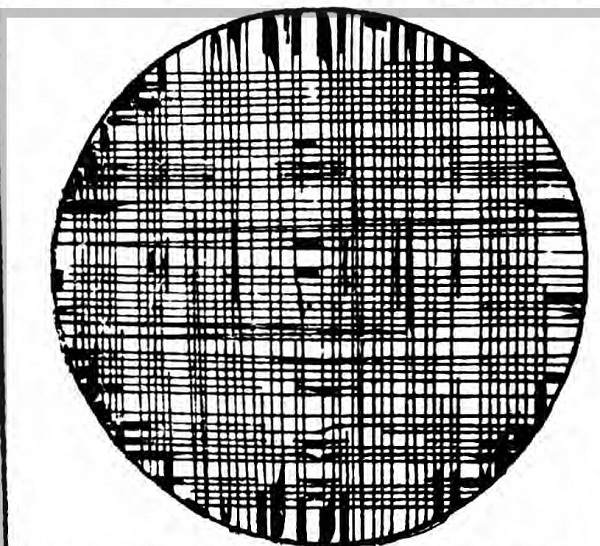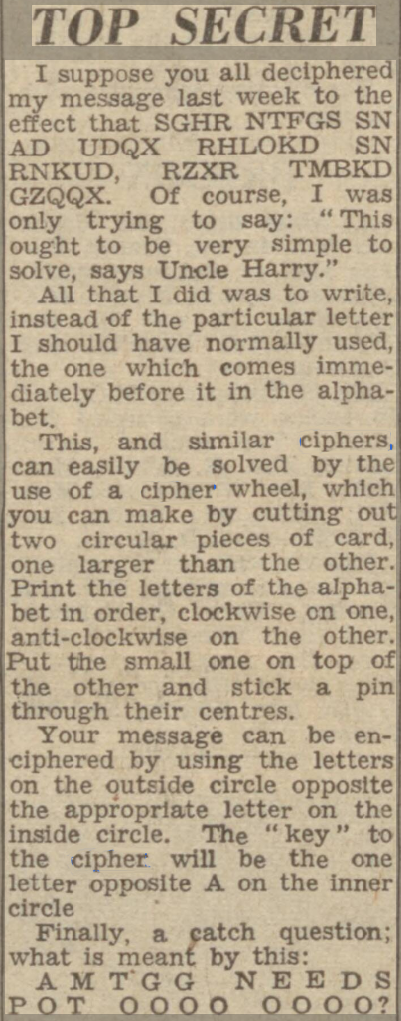In alten englischen Zeitungen habe ich zwei Verschlüsselungsrätsel gefunden – aus den Jahren 1909 und 1947. Wer kann sie lösen?
Wollen Sie eine Flasche Parfüm der Marke Cryptograph gewinnen? Falls ja, sind Sie leider zu spät dran, denn das entsprechende Preisauschreiben des Derby Daily Telegraph wurde bereits in der Ausgabe vom 12.8.1909 gestartet. Immerhin, das Rätsel, das es zu lösen galt, ist auch heute noch knifflig. Es geht um die folgende Grafik, die einen verschlüsselten Text darstellt:
Kann jemand dieses Kryptogramm lösen?
Ein weiteres Krypto-Rätsel fand ich unter der Überschrift “TOP SECRET” im Cheltenham Chronicle (Ausgabe vom 15.2.1947). Der Autor des Rätsels löst zunächst das Kryptogramm der Vorwoche auf. Dieses lautete SGHR NTFGS SN AD UDQX RHLOKD SN RNKUD, RZXR TMBKD GZQQX. Es entschlüsselt sich (Cäsar-Chiffre) in THIS OUGHT TO BE VERY SIMPLE TO SOLVE, SAYS UNCLE HARRY.
Etwas schwieriger wird das nächste Kryptogramm, das als im Artikel als “Fangfrage” bezeichnet wird:
A M T G G N E E D S P O T O O O O O O O O
Kann jemand dieses Kryptogramm lösen?
Follow @KlausSchmeh






Kommentare (31)